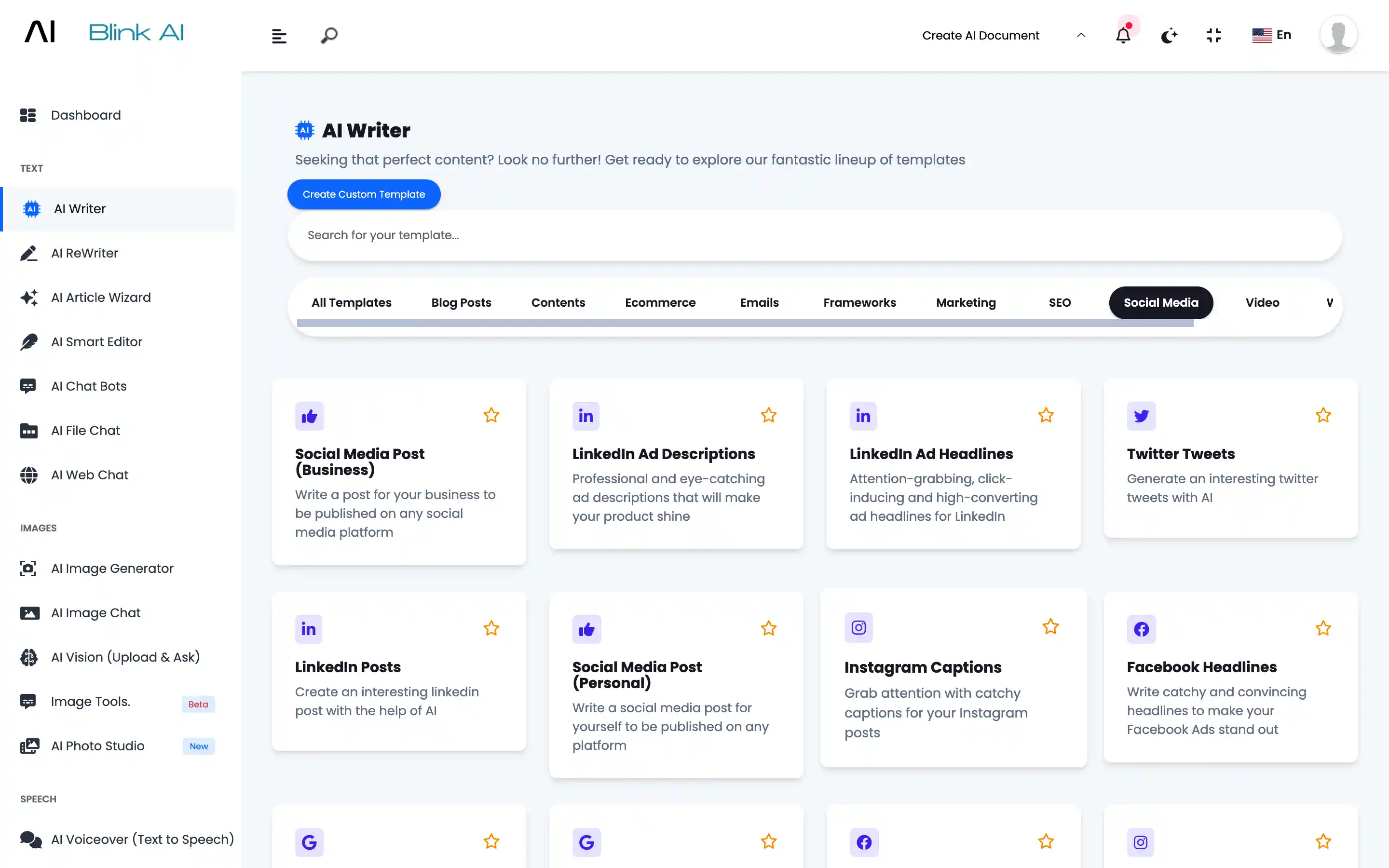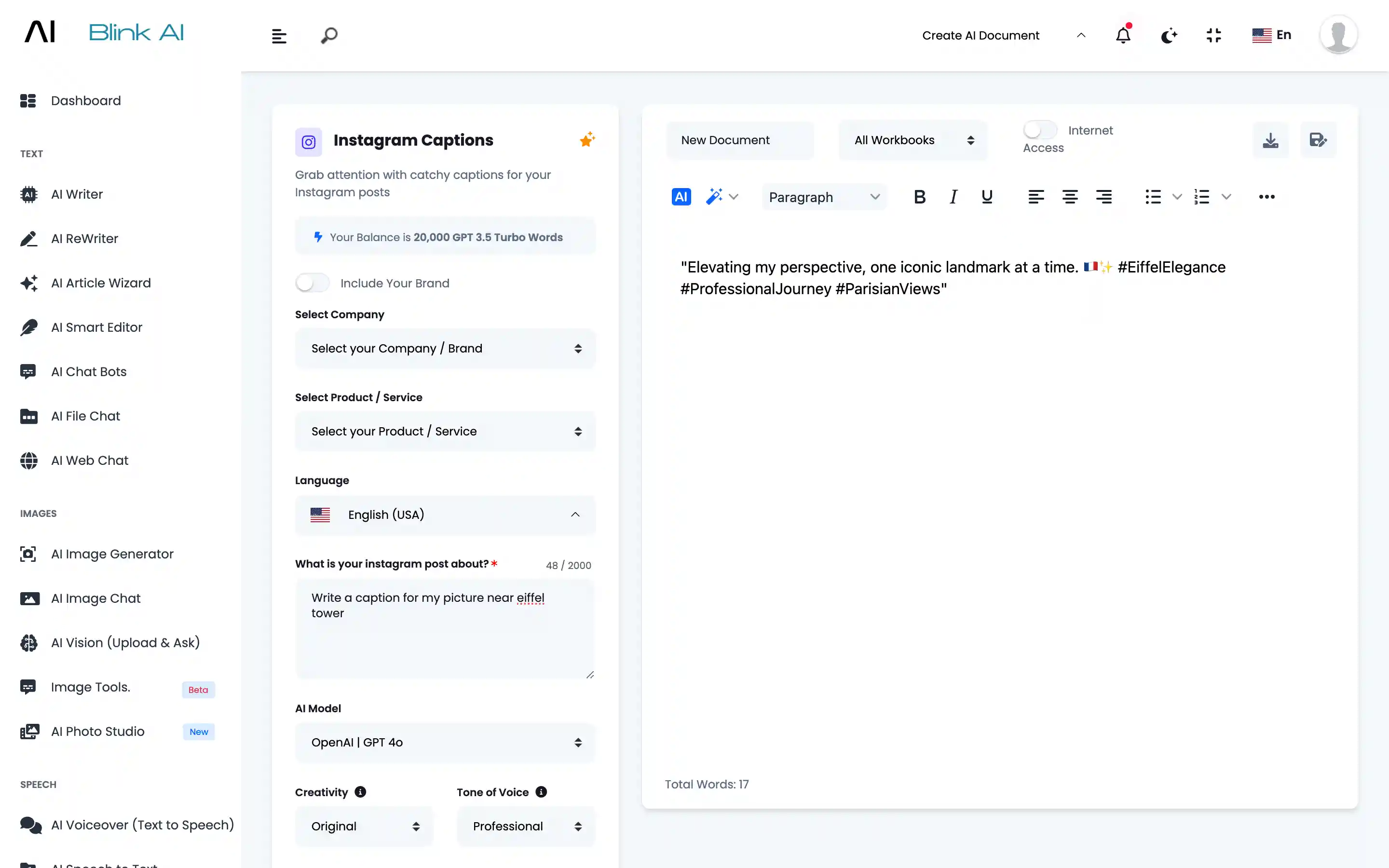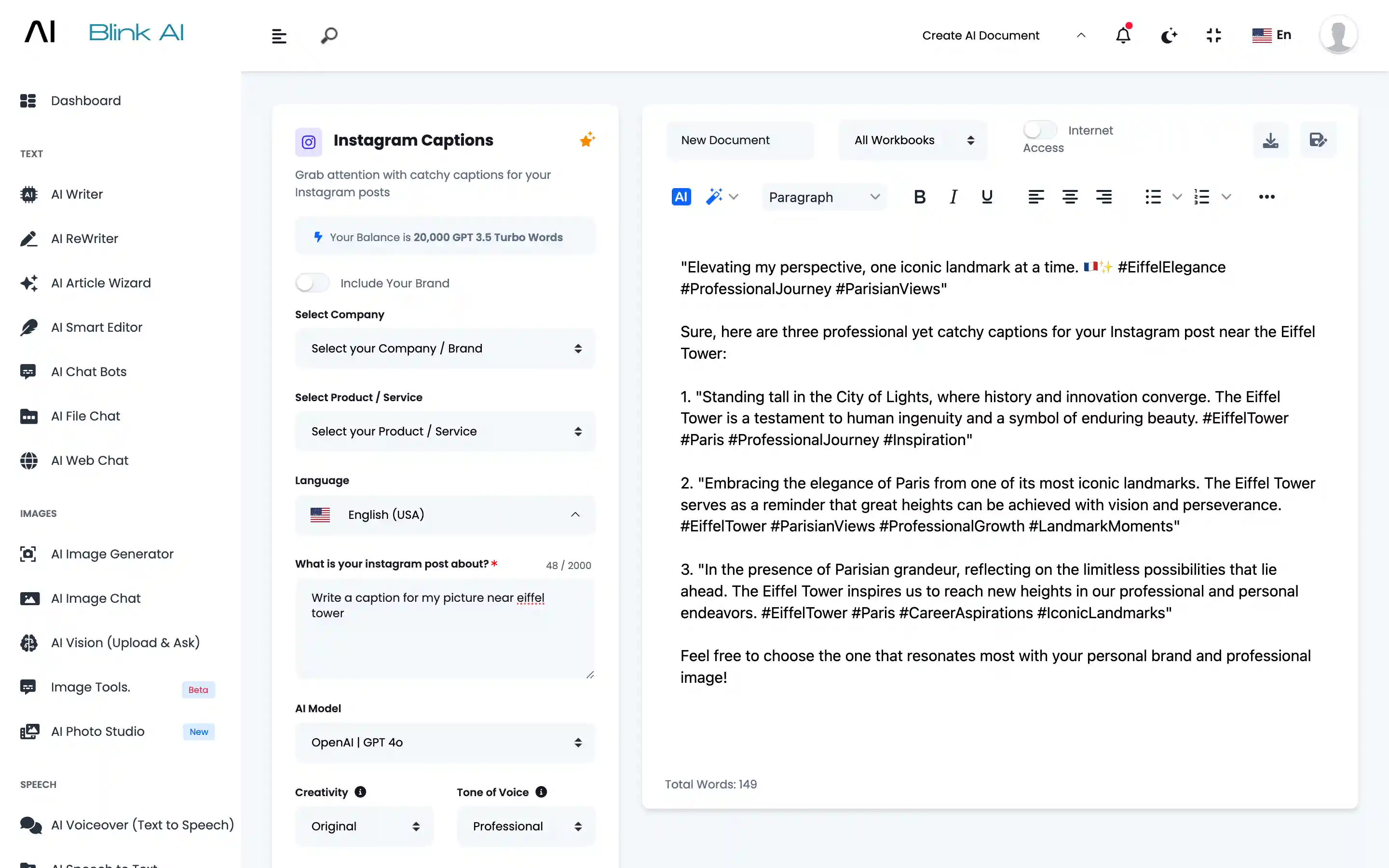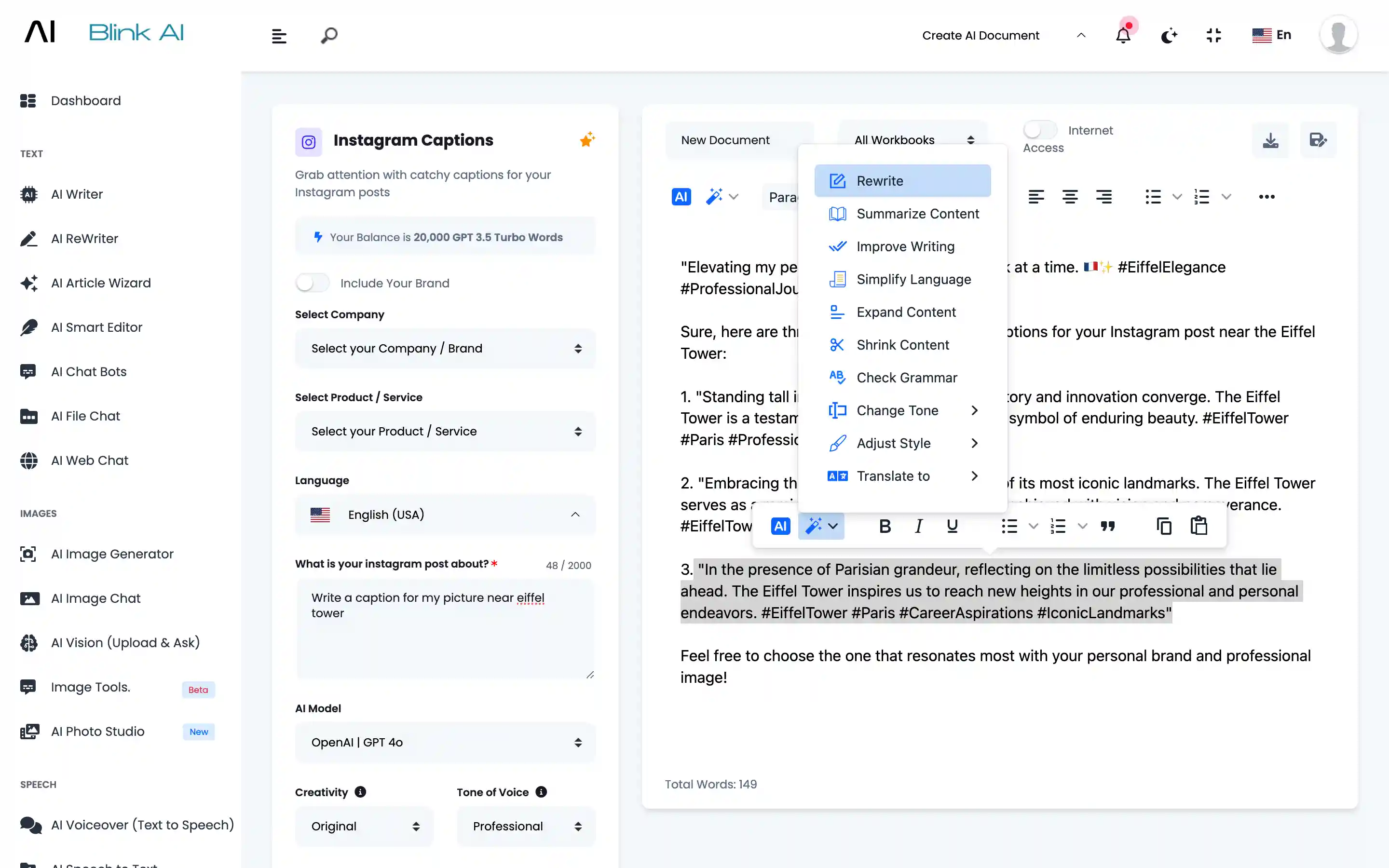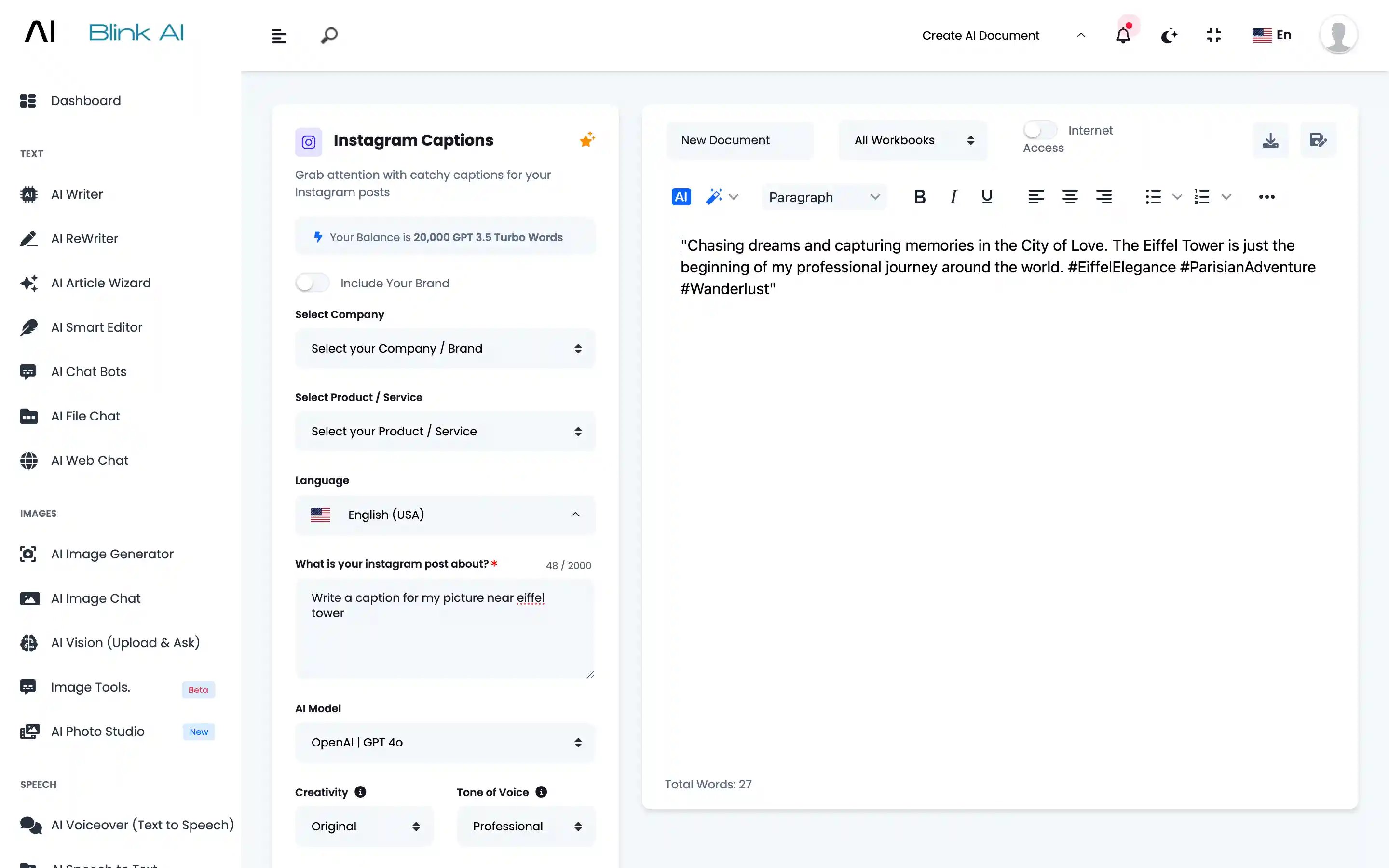Meet, BlinkAI – AI Content Generator: Text, Image, Video, Voice & Code
Rewrite with Keywords
One platform to generate all AI contents





AI Rewrite with Keywords
Rewrite your existing content with including specific keywords
Blink AI's Rewrite with Keywords
About Rewrite with Keywords
Rewriting your existing content to include specific keywords can significantly enhance its search engine optimization (SEO) and improve its visibility in search results. Here’s a comprehensive guide on how to effectively rewrite your content with targeted keywords: Keyword Research: Use tools like Google Keyword Planner, Ahrefs, or SEMrush to identify relevant keywords that have high search volume and low competition. Focus on primary keywords (main topic) and secondary keywords (related terms). User Intent: Ensure the keywords you select align with the search intent of your audience. Understanding what users are looking for when they search for these keywords will help you tailor your content to meet their needs. Content Audit: Review your existing content to understand its structure, main points, and areas where it can be enhanced. Identify sections that are relevant to your target keywords. Current Performance: Use tools like Google Analytics and Google Search Console to analyze the current performance of your content. Identify which keywords are already driving traffic and which ones need improvement. Keyword Placement: Strategically place your target keywords throughout the content. Focus on including keywords in the title, headings, introduction, conclusion, and naturally within the body text. Avoid Keyword Stuffing: Ensure the keywords fit naturally into the content. Keyword stuffing (overloading content with keywords) can harm readability and may be penalized by search engines. SEO-Friendly Title: Rewrite the title to include the primary keyword. Make it compelling and relevant to attract clicks. Example: Change "10 Tips for Better Sleep" to "10 Expert Tips for Better Sleep: Improve Your Sleep Quality Today". Optimized Headings: Include keywords in your subheadings (H2, H3) to improve SEO and guide readers through the content. Example: Change "Benefits of Sleep" to "Health Benefits of Quality Sleep". Natural Integration: Rewrite sections of the body text to naturally incorporate the primary and secondary keywords. Maintain a conversational tone and ensure the content flows smoothly. Synonyms and Variations: Use synonyms and variations of your target keywords to enhance readability and avoid repetition. Example: Instead of repeating "better sleep" multiple times, use "improved sleep" or "enhanced sleep quality". Meta Title: Ensure the meta title includes the primary keyword and is within the character limit (50-60 characters). Example: "10 Expert Tips for Better Sleep - Improve Sleep Quality Today". Meta Description: Rewrite the meta description to be concise, engaging, and keyword-rich. Example: "Discover 10 expert tips for better sleep. Improve your sleep quality with these practical and effective strategies." Internal Links: Link to other relevant pages on your website to improve SEO and provide additional value to readers. External Links: Include links to high-authority external sources that support your content. This can improve credibility and SEO. Original Introduction: "Getting better sleep is essential for your health and well-being. Here are some tips to help you sleep better." Rewritten Introduction: "Achieving better sleep quality is crucial for your overall health and well-being. In this article, we'll explore 10 expert tips to improve your sleep and enhance your daily performance." Rewriting your existing content to include specific keywords is a powerful way to boost your SEO and increase visibility in search engine results. By conducting thorough keyword research, strategically placing keywords, and maintaining high-quality, engaging content, you can optimize your content for better performance. Remember to avoid keyword stuffing and prioritize natural integration to ensure a positive user experience and improved search rankings.1. Identify Target Keywords
2. Analyze Existing Content
3. Plan Your Rewrite Strategy
4. Rewrite the Title and Headings
5. Revise the Introduction
6. Enhance Body Text with Keywords
7. Update the Conclusion
8. Optimize Meta Tags
9. Add Internal and External Links
10. Proofread and Edit
Example of Rewritten Content:
Conclusion
Steps for AI Writing
Start Writing Content in 3 Easy Steps
1
Step 1
AI Writer Section
Go to AI Writer section and select a template
2
Step 2
Details
Provide brief details about your requirement
3
Step 3
Generate
Generate, amend and save content
Discover AI Writer
How To Use Blink AI's AI Writer for Content Creation
Go to AI Writer Section
Choose from 70+ AI Writing Templates or Create your Own Template
Describe
You can provide details like what is the exact requirement. How many outputs you want. Which AI model you want to use.
Generate
Content will be generated based on your input.
Amend
Select the content you want to amend. Click on the Magic Wand to amend Generated Content.
Fresh Output
Fresh output will be generated. You can save it in Workbooks.
